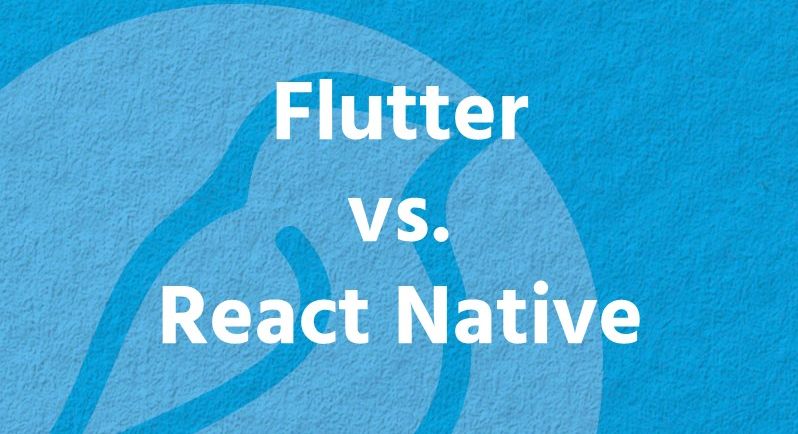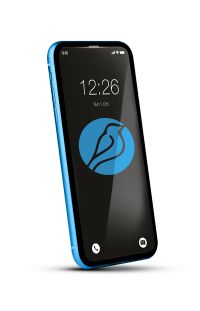Explore the nuanced battle of Flutter vs React Native. We help decode which is the superior choice for your mobile development project.
More...
Choosing the right technology for your project is critical. With so many options to choose from, it can be challenging to determine which one will offer the best performance, functionality, and user experience. In this article, we'll be comparing two of the leading mobile development frameworks: Flutter vs React Native.
We'll explore what each framework is, its features and benefits, and ultimately help you determine which one is better suited for your project.
As mobile development continues to grow in importance, the choice between Flutter and React Native has become increasingly relevant. With both frameworks experiencing significant growth in popularity, it's essential to understand the differences between them and identify which one aligns best with your mobile development needs.
Join us as we dive into the world of mobile development with Flutter vs React Native.

Understanding Flutter and React Native
When it comes to mobile app development, Flutter and React Native are two of the most popular frameworks in the market. Both allow developers to create cross-platform apps with a single codebase, making it easier and more cost-effective to maintain and update apps across platforms.
Flutter is an open-source UI toolkit developed by Google, released in 2017. It enables app developers to write code once and compile it into native ARM code for both Android and iOS platforms, making it a versatile option. On the other hand, React Native is a JavaScript-based framework developed by Facebook, released in 2015. It allows developers to build native mobile apps for iOS and Android using a single codebase written in JavaScript.
Understanding FlutterFlutter is built on the Dart programming language, which is designed to be easy-to-learn and fast to execute. This makes it an ideal programming language for Flutter, as it allows for fast and efficient development. Flutter is also known for its flexible and customizable UI designs, with its widget-based approach giving developers a high degree of control over the look and feel of their app. Additionally, Flutter comes with built-in widgets that can be easily customized to match your app's design. These widgets are designed to provide a consistent experience across all platforms, so apps built with Flutter look and feel the same on both Android and iOS devices. | |
 | Understanding React NativeReact Native is built on top of Facebook's React library, which allows developers to build dynamic web applications using JavaScript. With React Native, developers can create native mobile apps using the same principles used in building web applications with React. This makes it a popular choice among developers who are already familiar with React. One of the biggest benefits of React Native is its ability to integrate seamlessly with native components, enabling developers to build highly performant mobile apps with a native look and feel. Additionally, React Native has a large and active developer community, which means that there are a plethora of third-party libraries and resources available to help developers build better mobile apps. |
 | In conclusion, both Flutter and React Native are powerful mobile development frameworks that allow developers to build high-quality cross-platform apps. Understanding the similarities and differences between both frameworks is crucial to choose the right one for your project. |
Key Similarities between Flutter and React Native
When it comes to mobile app development, two frameworks stand out from the rest: Flutter and React Native. While they have their differences, they also share several key similarities that make them a popular choice for developers all around the world.
First and foremost, both Flutter and React Native enable cross-platform development. This means that developers can create applications that work on both iOS and Android devices, streamlining the development process and saving time and resources. Additionally, this allows for a wider reach of the app across multiple platforms.
Secondly, both frameworks provide a rich set of UI components and design elements that can be used to build visually engaging and interactive apps. This is essential for creating user-friendly interfaces and maintaining user engagement.
And finally, both Flutter and React Native offer hot reloading, allowing developers to see changes they make in real-time as they work on their apps. This means faster development cycles, more efficient debugging, and an overall smoother development process.
Key Similarities between Flutter and React Native Summary Table
Similarities | Flutter | React Native |
|---|---|---|
Cross-platform development | ||
Rich set of UI components | ||
Hot reloading feature |
Overall, while there are certainly differences between Flutter and React Native, it's important to note that they do share some important similarities. These commonalities make them both formidable options for mobile app development, and which framework is the right choice will depend largely on the needs of your specific project.
Benefits of Using Flutter for Mobile Development
When it comes to mobile development, choosing the right framework can make all the difference. In this section, we'll explore the benefits of using Flutter for developing mobile applications.
- 1Fast Performance: Flutter is known for its excellent performance. It uses a unique mechanism called the Flutter Engine that enables widgets to directly communicate with the platform rather than going through a bridge like React Native. This direct communication results in faster execution times and smoother animations.
- 2Flexible UI Design: Flutter provides a highly flexible and customizable UI toolkit, making it possible to create beautiful designs that match your brand's identity. The framework's widget-based approach allows for easy customization, and the built-in widgets make UI development a breeze.
- 3Built-in Widgets: Flutter comes with a rich set of customizable widgets that help reduce development time and effort. These widgets can be used to create the basic building blocks of your app, such as buttons, text fields, and more, with minimal coding required.
- 4Hot Reloading: With Flutter's hot reloading feature, developers can see the results of their code changes instantly, without the need to rebuild the entire app. This saves time and allows for a faster development cycle.
- 5Dart Programming Language: Dart is a modern, object-oriented programming language used in Flutter development. It offers features such as AOT (Ahead-Of-Time) and JIT (Just-In-Time) compilation, making it possible to create fast and efficient code that runs on both iOS and Android platforms.
Overall, Flutter offers a comprehensive toolkit for developing high-performance, visually-stunning mobile applications. Its flexibility and built-in widgets make it easy to design and customize UIs, while its hot reloading feature accelerates development workflows.
Benefits of Using React Native for Mobile Development
React Native is a popular framework for mobile app development that offers a range of benefits. Here are some of the key advantages of using React Native for your next project:
- 1Large Developer Community: React Native has a vast community of dedicated developers who contribute to its growth and offer support in various forums. This ensures that you have access to a vast pool of resources and expertise when you need help with your project.
- 2Code Reusability: One of the main advantages of React Native is the ability to reuse code across different platforms. This drastically reduces development time and costs, enabling you to focus on perfecting your app's features and user experience.
- 3Seamless Integration with Native Components: React Native's integration with native components ensures that your app performs optimally without any lag or interference. This is especially important when creating complex applications with multiple features and functions.
- 4JavaScript Programming Language: JavaScript is an easy-to-learn language that is used in React Native. This means that developers can quickly get started with building mobile apps without having to learn a new programming language.
- 5Cost-Effective: React Native's code reusability feature reduces development time, which makes it a cost-effective option for your project. This is especially beneficial for small businesses or startups that have limited budgets but want to create high-quality mobile applications.
Overall, React Native is a versatile and reliable framework that offers a range of benefits for mobile app development projects. Its large developer community, code reusability, seamless integration with native components, and JavaScript programming language make it a popular choice for developers worldwide.
Performance Comparison: Flutter vs React Native
When it comes to mobile development, performance is a crucial factor that can make or break an app's success. In this section, we will compare the performance of Flutter and React Native, focusing on startup time, rendering speed, and memory usage.
Metric | Flutter | React Native |
|---|---|---|
Startup Time | Faster | Slower |
Rendering Speed | Faster | Slower |
Memory Usage | Lower | Higher |
Based on these metrics, we can see that Flutter outperforms React Native in terms of startup time and rendering speed. Flutter apps tend to load faster and deliver smoother animations and transitions. On the other hand, React Native consumes more memory than Flutter, which can impact the app's performance and user experience.
It's worth noting that performance can vary depending on the specific app and its requirements. For example, if an app requires complex graphics or heavy data processing, React Native might offer better performance due to its use of native components. However, for simpler apps with basic UI requirements, Flutter might be the better option due to its fast performance and efficient memory usage.
In conclusion, while Flutter has the edge over React Native in terms of performance, the choice of framework ultimately depends on the specific needs and goals of your project.

User Interface (UI) Design: Flutter vs React Native
When it comes to UI design, both Flutter and React Native offer unique approaches and advantages. Flutter follows a widget-based approach, where everything is a widget, and every widget is customizable. This provides a lot of flexibility and control to the developer, allowing them to create a unique and consistent user experience across all platforms. On the other hand, React Native relies on native components, which are pre-built UI building blocks, to create the app's interface. This approach leverages the native components pre-built by the operating system and provides a more natural, platform-specific feel to the app.
Flutter's widget-based approach allows for easy customization of the user interface and encourages the use of Material Design, a design language developed by Google. Material Design provides a set of guidelines for designing apps that are consistent across all platforms and devices. With Flutter, developers have access to a vast number of pre-built widgets and can easily create their custom widgets. This approach ensures that the app's UI is unique and follows the brand guidelines.

React Native's reliance on native components provides a more natural and platform-specific user experience. The pre-built components ensure that the app follows the platform-specific UI guidelines, making it easier for users to navigate and understand the app's interface. While it is possible to customize React Native components, it requires more effort and may not align with the platform-specific guidelines.
Overall, when it comes to UI design, choosing between Flutter and React Native depends on the project's requirements. If you want complete control over the app's UI and want to create a unique and consistent user experience across all platforms, Flutter is the way to go. On the other hand, if you want a more natural, platform-specific feel for your app and want to leverage pre-built components, React Native is a better option.
Community and Ecosystem: Flutter vs React Native
As with any technology, the community and ecosystem surrounding it are critical in determining its long-term viability. In this section, we analyze the support and resources available for both Flutter and React Native.
 | Flutter Community and EcosystemFlutter has a rapidly growing community that offers a wealth of resources for developers. The official Flutter website has extensive documentation, including tutorials, guides, and reference materials. Additionally, the Flutter community has produced numerous third-party packages and libraries that extend the framework's capabilities. Google, the creator of Flutter, has invested heavily in the technology, ensuring a robust ecosystem that is likely to continue expanding in the future. The Flutter team regularly releases updates and patches, and there are several online forums and social media groups where developers can connect and collaborate. |
 | React Native Community and EcosystemReact Native also boasts a robust community and ecosystem that has developed over the years. Facebook created React Native and continues to support the technology, ensuring the framework evolves with the latest trends and developments in mobile app development. The React Native community has produced numerous third-party packages and libraries that extend the framework's capabilities. Additionally, the framework has extensive documentation, including guides, tutorials, and reference materials, available on the official React Native website. |
Category | Flutter | React Native |
|---|---|---|
Community Support | Fast-growing community, active forums, and social media groups. | Large developer community with significant contribution from Facebook, active forums, and social media groups. |
Third-party Libraries | A rapidly expanding library of packages and widgets. | A mature ecosystem with numerous third-party packages and libraries. |
Documentation | Extensive official documentation with tutorials, guides, and reference materials. | Extensive official documentation with tutorials, guides, and reference materials. |

Both Flutter and React Native offer robust ecosystems with active communities and extensive resources that can facilitate developers' productivity. Flutter has the advantage of being backed by Google and offers fast performance and a flexible UI design. React Native, on the other hand, has a larger developer community and boasts seamless integration with native components.
Platform Support: Flutter vs React Native
When it comes to platform support, both Flutter and React Native offer compatibility with major operating systems like iOS and Android. However, there are some differences to consider when choosing between the two frameworks.
Flutter Platform SupportFlutter has an advantage over React Native in terms of platform support as it allows for building apps across a wider range of platforms. In addition to iOS and Android, Flutter also supports web, desktop and embedded devices. Flutter's web support is still in beta, but it allows developers to build web applications in addition to mobile apps using a single codebase. Flutter's desktop support also remains in beta, but it allows developers to build cross-platform desktop apps for Windows, Mac, and Linux. Flutter also has experimental support for building apps for embedded devices like Raspberry Pi. | |
 | React Native Platform SupportReact Native supports the same platforms as Flutter, with the exception of web and embedded devices. However, it has a significant advantage over Flutter when it comes to developing for specific platforms. For example, if a developer is building an app specifically for iOS, React Native may be a better choice as it has better compatibility with native iOS components. It's also worth noting that React Native has a larger developer community, which can provide additional support for platform-specific development challenges. |
When deciding between Flutter and React Native, it's essential to consider platform support and the specific needs of your project. Flutter may be a better choice for apps that need to be deployed across a wide range of platforms, while React Native may be a better choice for platform-specific development needs.
Case Studies and Use Cases: Flutter vs React Native
Now, let's examine real-world examples of how Flutter and React Native have been utilized for mobile development.
Flutter Case Studies and Use Cases
Alibaba: One of the largest e-commerce companies in the world, Alibaba leveraged Flutter to develop its Xianyu app. The use of Flutter allowed for faster iteration cycles and improved app performance, resulting in increased user engagement. | |
Groupon: Groupon used Flutter to rebuild its Merchant app, which enables business owners to manage their deals and track customer activity. The use of Flutter resulted in a more intuitive user experience and faster development cycles. |
React Native Case Studies and Use Cases
Facebook: As the creators of React Native, it's no surprise that Facebook utilizes the framework heavily. In particular, the Facebook Ads Manager app was rebuilt using React Native, leading to improvements in efficiency and faster development cycles. | |
Bloomberg: Bloomberg's mobile app was built using React Native, allowing for cross-platform development and faster time-to-market. The app boasts a sleek user interface and real-time data updates. |
Flutter | React Native | |
|---|---|---|
Pros | Fast iteration cycles | Large developer community |
Cons | Relatively new framework | Performance limitations |
Overall, it's clear that both Flutter and React Native have been successfully utilized for mobile development by major companies in various industries. When choosing between the two frameworks, it's important to consider the specific needs and goals of your project, as well as factors such as development resources and community support.
Summary
The choice between Flutter and React Native ultimately depends on the specific needs of your mobile development project. Both frameworks have their strengths and weaknesses, and each can offer a great development experience in the right circumstances.
If you prioritize fast performance, flexible UI design, and built-in widgets, then Flutter may be the better choice for you. Its use of the Dart programming language can also be a great benefit for those looking to streamline the development process.
On the other hand, if you value a large developer community, code reusability, and seamless integration with native components, React Native may be the way to go. Its use of JavaScript as a programming language can also be a major plus for developers who are already well-versed in the language.
Overall, it's important to carefully evaluate your project's specific needs and goals before choosing between Flutter and React Native. Consider factors like performance, UI design, community support, platform compatibility, and more. By doing so, you'll be able to make an informed decision that sets your project up for success.
Other framework comparisons from Bluebird:
FAQ
What is the purpose of this article?
This article aims to compare Flutter and React Native for mobile development, providing insights into the strengths and weaknesses of each framework.
What are Flutter and React Native?
Flutter and React Native are frameworks used for mobile app development. Flutter uses the Dart programming language, while React Native is based on JavaScript.

What are the similarities between Flutter and React Native?
Both frameworks enable cross-platform development, offer a wide range of UI components, and support hot reloading for faster development cycles.
What are the benefits of using Flutter for mobile development?
Flutter offers fast performance, flexible UI design, built-in widgets, and utilizes the Dart programming language.
What are the benefits of using React Native for mobile development?
React Native has a large developer community, promotes code reusability, seamlessly integrates with native components, and uses JavaScript.
How do Flutter and React Native compare in terms of performance?
This article provides a detailed performance comparison between Flutter and React Native, including factors such as startup time, rendering speed, and memory usage.
How do Flutter and React Native differ in UI design?
Flutter uses a widget-based approach, while React Native relies on native components. This section explores the implications of these differences in UI design.
What is the community and ecosystem like for Flutter and React Native?
The article examines the community support, documentation, third-party libraries, and developer resources available for both frameworks.
Which platforms do Flutter and React Native support?
This section compares the platform support of Flutter and React Native, focusing on compatibility with iOS and Android.
Are there any real-world case studies and use cases for Flutter and React Native?
The article showcases examples of mobile apps built with Flutter and React Native in various industries, highlighting the strengths and weaknesses for different application types.
